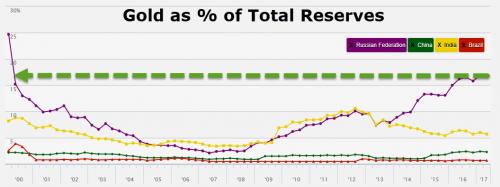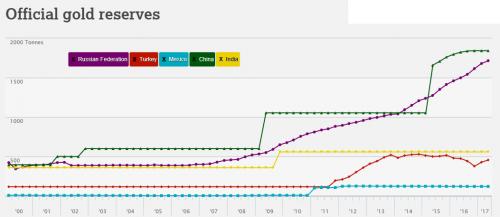Time is the soul of money, the long-view – its immortality. Hard assets are forever, even when destroyed by the cataclysms of history. It is the outlook that perpetuated the most competent and powerful aristocracies in continental Europe, well up through World War I and, in certain prominent cases, beyond; it is the mindset that has sustained the most fiscally serious democratic republic in the Western world, that of Switzerland (as demonstrated in this article). In this view, the stewardship of money, formerly known as “banking,” is a serious matter of serious wealth management and not a weird-science lab experiment of investment products ultimately designed for hedge fund managers’ tax arbitrage schemes. More than
Topics:
Marcia Christoff-Kurapovna considers the following as important: Actuarial science, Asset, asset allocation, Business, Central Banks, China, Commodity, continental Europe, Copper, economy, Featured, Finance, Financial market, Gold, inflation, Investment management, Jim Rogers, Latin America, Mises Institute, Money, negative rates, newsletter, Precious Metals, Renaissance, Switzerland
This could be interesting, too:
Eamonn Sheridan writes CHF traders note – Two Swiss National Bank speakers due Thursday, November 21
Charles Hugh Smith writes How Do We Fix the Collapse of Quality?
Marc Chandler writes Sterling and Gilts Pressed Lower by Firmer CPI
Michael Lebowitz writes Trump Tariffs Are Inflationary Claim The Experts
| Time is the soul of money, the long-view – its immortality.
Hard assets are forever, even when destroyed by the cataclysms of history. It is the outlook that perpetuated the most competent and powerful aristocracies in continental Europe, well up through World War I and, in certain prominent cases, beyond; it is the mindset that has sustained the most fiscally serious democratic republic in the Western world, that of Switzerland (as demonstrated in this article). In this view, the stewardship of money, formerly known as “banking,” is a serious matter of serious wealth management and not a weird-science lab experiment of investment products ultimately designed for hedge fund managers’ tax arbitrage schemes. More than ever the focus on hard assets is a dire call to arms given the deformed market culture of central banking monetary magic. Despite the early promise of the Trump presidency to reinvigorate the economy, the United States remains mired in economic stagnation built up over so many years of debt-driven policies, easy-money policies, and the ZIRP fiasco fostering a bizarre-world situation in which the actual economy is doing poorly while the market is soaring. In such an environment, the allure of the centuries’-old tried and true has never had more appeal. |
|
In a word, the hard asset vision is about building wealth outside the stock market. It refers to three main strategies overall:
Where this last is concerned, we mean art as investment and not art-as-commerce, such as that which contaminates today’s insipid and overpriced world of ‘Balloon-Dog’ bad art. The auction world of Rembrandt and Picasso; of El Greco and Gerhardt Richter has been on a tear, is smashing records, and cannot be ignored as an excellent safe-haven vehicle, as outstanding works of art traditionally always have been. To begin with, physical gold and precious metals remain an investment enigma despite being market-leading performers for the past seventeen years. Gold is a must-have portfolio asset amid the aggressive debt levels and monetary debasement that have so unhinged the market. Silver, for its part, in addition to its prestige status, also has innumerable industrial applications and throughout the precious-metal bull market since 2000. Russia, in this context, is leading the charge in the long-view outlook. For the past three years, the Bank of Russia has been the world’s number one stacker of gold, and, thus far in 2017, has taken the lead position among international central banks in buying the commodity. |
Percent Gold of Total Reserves, 2000 - 2017 |
| At its current pace, Moscow will unseat China for the number five spot of gold-holding nations by the first quarter of 2018.
Currently, the gold-to-GDP ratios of the world’s leading powers are: Russia 5.6%; the Euro Zone 3.6%; the U.S. 1.8% and China 1.5%. Yet countries buying up gold versus investors who do so are two different worlds. Ninety-five percent of the world’s gold is held as a wealth store. In other commodities, zinc and copper have been the big movers. Zinc, the key galvanizing agent, claimed the status of the best performing metal last year. Copper began its resurgence in 2017, and in late August of this year, a host of commodities broke out of multi-month consolidation patterns. Nickel and cobalt are also coming into the spotlight as metals essential to the rapidly growing lithium ion (Li-ion) battery sector. |
Gold Reserves, 2000 - 2017 |
The art world lags not too far behind that of precious metals in terms of history’s preferred storehouses of value as protection against uncertain times. Art as investment has long been a favored strategy of the European elite since, effectively, the High Middle Ages and has never gone out of style. In modern times, the phenomenon of an ever-growing collectors’ base and less supply of museum quality works has been accepted as a meaningful way to protect investors’ cash during economic difficulty. Though continually eclipsed in the media by the brasher contemporary art market, Old Masters (and Classic Modern—the great 20th century works) have shown stable, often spectacular, results over the past ten years with both categories reaching record-breaking highs.
Art, to be a safe haven, must be an investment and not a whim – just as it was for the Liechtenstein family who acquired Leonardo da Vinci’s Ginevra de Benci so many centuries ago. In the wake of the World War II near-bankruptcy of that eponymous principality (whose monarchs were not and are not supported by taxes), that painting was the first of the major, big-ticket art sales of the 20th century, when it was sold to Paul Mellon and The National Gallery of Art in Washington DC. Ginevra continues to hang there today (and to date, is the only Leonardo painting in possession of the United States). While the average investor may not be in a position to store wealth in a Renaissance master or a Picasso, there are always the underrated gems or the new discoveries that can and will bring in the most unexpected of windfalls decades down the line.
Finally, farmland is seen by many as an excellent addition to a precious-metal portfolio. As Jim Rogers predicted in early September, fortunes will be made in agriculture “and when an industry breaks full faith, even mediocre people make a lot of money” in that sector. Hard asset investors continue to include farmland in their portfolios “for a combination of income generation, diversification and inflation-hedging”. Historically, farmland, like forestland in continental Europe or Latin America, has been a unique asset class demonstrating low-correlation to traditional asset classes, and which performs well as inflation rises.
Cash reserves, land as cash, the endless applications of Nature’s resources to industry; the prestige, privacy, and long-term value of beautiful art: such has been the outlook of the hard-asset philosophy.
Today, that cult of independently-minded investors will laugh all the way to the bank – precisely by avoiding the paths laid out, and so horribly deformed, by those very banks.
Tags: Actuarial science,Asset,Asset allocation,Business,central banks,China,Commodity,continental Europe,Copper,economy,Featured,Finance,Financial market,Gold,inflation,Investment management,Jim Rogers,Latin America,Mises Institute,money,negative rates,newsletter,Precious Metals,Renaissance,Switzerland



